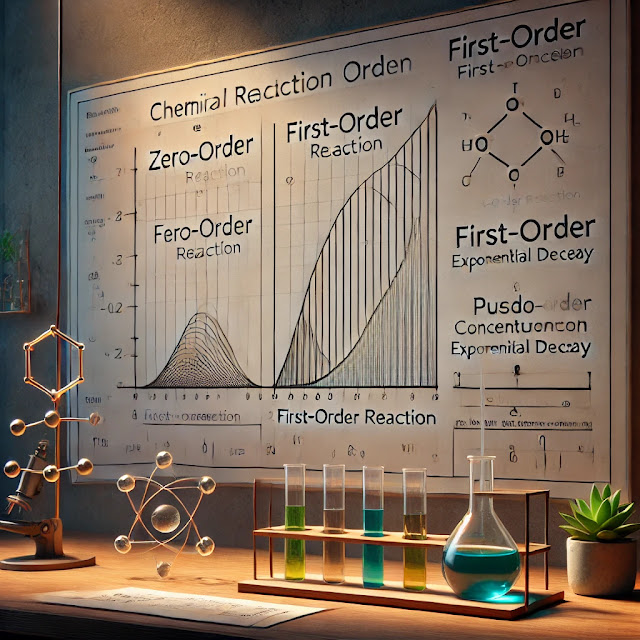Definition: In a zero-order reaction, the rate of reaction is independent of the concentration of the reactants. The rate law for a zero-order reaction can be written as:
where is the rate constant.
Integrated Rate Law: For a zero-order reaction, the integrated rate law is:
where:
- is the concentration of reactant A at time ,
- is the initial concentration of reactant A,
- is the zero-order rate constant,
- is time.
Half-Life: The half-life () for a zero-order reaction is given by:
First Order Reactions
Definition: In a first-order reaction, the rate of reaction is directly proportional to the concentration of one reactant. The rate law for a first-order reaction can be written as:
where is the concentration of reactant A and is the rate constant.
Integrated Rate Law: For a first-order reaction, the integrated rate law is:
or in logarithmic form:
where:
- is the concentration of reactant A at time ,
- is the initial concentration of reactant A,
- is the first order rate constant,
- is time.
Half-Life: The half-life () for a first-order reaction is given by:
or approximately:
Pseudo-First Order Reactions
Definition: A pseudo-first order reaction is one that is not truly first order, but can be approximated as first order under certain conditions. This typically occurs in reactions involving two or more reactants, where one reactant is in large excess compared to the others. The concentration of the excess reactant remains nearly constant during the reaction, allowing the reaction to be treated as if it were first order with respect to the other reactant(s).
Example: Consider a reaction between reactants A and B:
If the concentration of B is much larger than the concentration of A (), then remains approximately constant during the reaction. The rate law can then be written as:
where is a pseudo-first-order rate constant.
Integrated Rate Law: For the pseudo-first-order reaction, the integrated rate law is similar to that of a true first-order reaction:
where:
- is the concentration of reactant A at time ,
- is the initial concentration of reactant A,
- is the pseudo-first-order rate constant,
- is time.
Summary
- Zero Order Reaction: The rate is independent of the concentration of reactants. .
- First Order Reaction: Rate is directly proportional to the concentration of one reactant. .
- Pseudo First Order Reaction: A reaction that appears to be first order because one reactant is in large excess and its concentration remains constant. .











0 Comments
Thanks for your feedback, ll get back to you soon